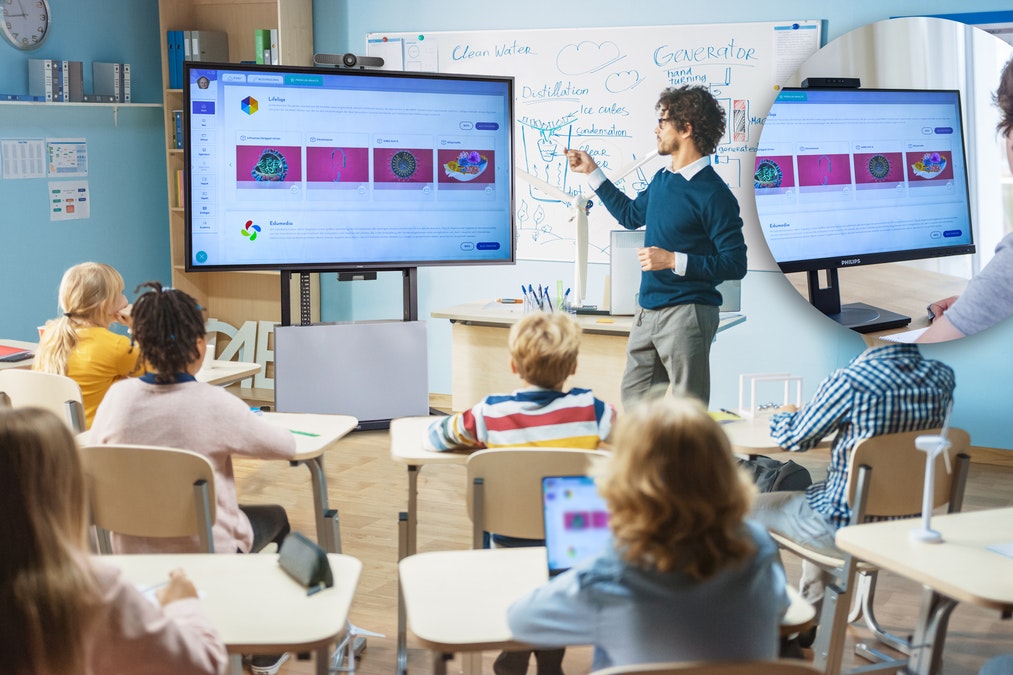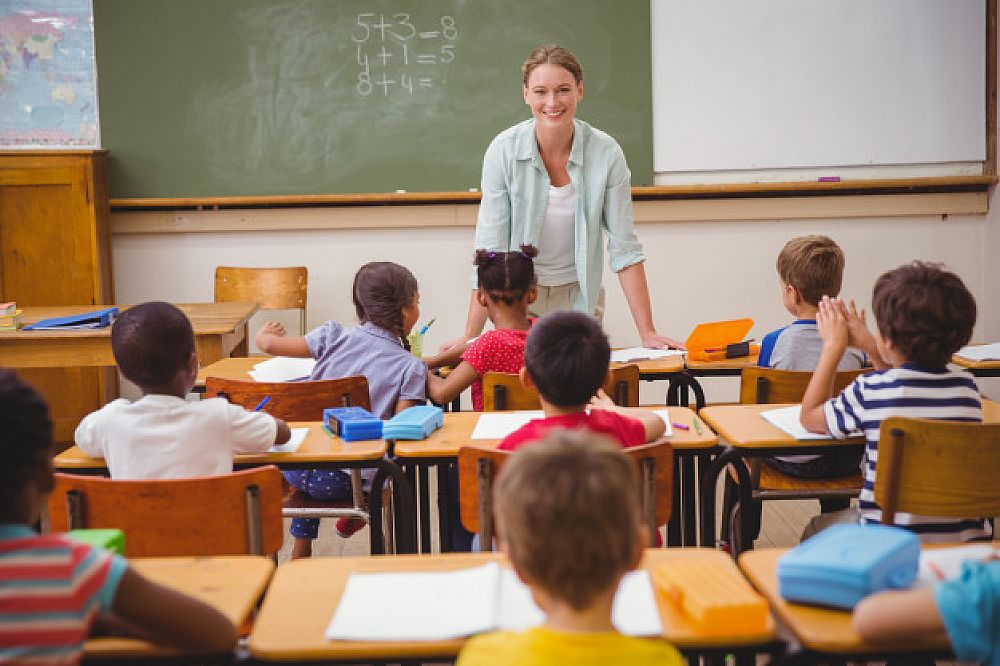Get Top Results with Primary Science Tuition Singapore from Experienced Tutors
Get Top Results with Primary Science Tuition Singapore from Experienced Tutors
Blog Article
Exploring the Various Teaching Techniques in Key Science Education Today
Inquiry-based knowing, hands-on experiments, and the combination of innovation are redefining exactly how teachers involve young minds. Furthermore, collaborative methods and set apart guideline are being employed to cater to the diverse demands of pupils, boosting both engagement and understanding.
Inquiry-Based Understanding
Inquiry-Based Discovering (IBL) is a pedagogical technique that motivates pupils to discover clinical concepts through questioning, examination, and hands-on experimentation. This approach highlights the function of trainees as energetic participants in their knowing, advertising crucial reasoning and analytic skills. By involving with real-world questions, pupils come to be curious and motivated, which boosts their understanding of scientific concepts.
In IBL, instructors function as facilitators, leading students as they browse their queries instead of supplying information directly. This student-centered strategy enables distinction, fitting numerous learning styles and speeds. Pupils create skills in creating theories, creating experiments, and analyzing data, which are vital for clinical proficiency.
Additionally, IBL promotes collaboration amongst trainees, motivating them to share ideas and searchings for. This collective inquiry advertises social abilities and a feeling of area within the classroom. Additionally, the procedure of query motivates durability, as trainees learn to welcome failure as a tipping rock towards understanding.
Hands-On Experiments
Hands-on experiments are an important component of reliable science education and learning, matching the concepts of inquiry-based knowing. These experiments enable trainees to engage directly with clinical principles, promoting a deeper understanding through experiential understanding. By controling materials and observing results, young students can understand abstract theories in concrete means.
Such tasks promote vital thinking and analytic abilities, as pupils assume results, conduct experiments, and evaluate results. This process motivates them to ask inquiries, improve their understanding, and develop a scientific frame of mind. Hands-on experiments can be tailored to varied understanding designs, guaranteeing that all pupils have the opportunity to involve meaningfully with the material.
In addition, hands-on experiments usually encourage collaboration amongst peers, advertising teamwork and interaction abilities. Working in groups enables students to share concepts, discuss findings, and discover from each other, which enhances their overall instructional experience.
Incorporating hands-on experiments into the key scientific research educational program not only enriches the discovering setting yet also grows a long-lasting interest in science. By proactively getting involved in their education and learning, students are more probable to create an enthusiasm for clinical questions that extends past the class.

Modern Technology Integration
Integrating technology into key scientific research education and learning has ended up being progressively important in promoting pupil interaction and improving finding out outcomes. Using digital devices, such as interactive simulations, digital labs, and instructional software program, supplies pupils with possibilities to discover clinical principles in innovative ways. These sources facilitate a deeper understanding of complicated topics by allowing learners to picture and adjust variables that would certainly be unwise in a standard class setup.
Furthermore, modern technology assimilation urges individualized learning experiences. Pupils can progress at their own pace, taking another look at difficult principles with multimedia resources, which accommodate different knowing styles. This adaptability not only supports specific growth however likewise grows a feeling of autonomy in students.
In addition, modern technology acts as a bridge to real-world science, connecting trainees with existing research and professional payments. Access to on the internet data sources and scientific journals broadens students' perspectives on scientific inquiry and fosters important assuming abilities.
Collaborative Discovering
Joint knowing plays a crucial duty in key scientific research education by promoting synergy and communication abilities among trainees. This approach motivates students to interact, share understanding, and involve in problem-solving, which enhances their understanding of clinical principles. By joining team activities, trainees learn to verbalize their ideas, listen to diverse perspectives, and work out options, all of which are vital abilities in both academic and real-world contexts.

Study indicates that joint knowing can lead to boosted motivation and involvement in scientific research subjects, as pupils locate enjoyment in common experiences (primary science tuition Singapore). Additionally, this technique prepares students for future collective ventures, outfitting them with the skills required for efficient team effort in higher education and learning and expert environments. Ultimately, welcoming collaborative learning in primary science education can substantially enhance the learning experience and advertise a much deeper understanding of clinical query
Differentiated Guideline

Set apart direction can show up in various methods, such as varying the content, processes, or products of discovering. Teachers may use tiered jobs that give varying levels of complexity, enabling pupils to work at their respective preparedness degrees. Additionally, adaptable organizing techniques can facilitate collaboration amongst pupils with various abilities, fostering peer understanding.
Analysis plays a vital role in this technique, as it educates guideline and aids instructors comprehend each pupil's one-of-a-kind needs. Developmental evaluations, such as tests and observations, can guide educators in adjusting their strategies to enhance finding out outcomes. primary science tuition Singapore. Eventually, by applying distinguished guideline in key scientific research education and learning, educators can grow an extra effective and equitable knowing atmosphere, equipping all trainees to reach their full possibility in comprehending scientific sensations
Verdict
In recap, the varied mentor methods in key scientific research education, including inquiry-based discovering, hands-on experiments, technology integration, joint learning, and differentiated instruction, jointly add to an extra effective knowing setting. These approaches advertise vital thinking, problem-solving abilities, and a much deeper understanding of clinical ideas. By applying these strategies, educators can develop supportive and engaging class that resolve the different needs of pupils, ultimately fostering a lifelong rate great post to read of interest in science and enhancing academic success.
Inquiry-Based Learning (IBL) is a pedagogical approach that motivates pupils to check out clinical concepts with questioning, examination, and hands-on trial and error.Joint discovering plays an essential function in key science education and learning by cultivating synergy and interaction skills amongst pupils.Research shows that collective understanding can lead to enhanced motivation and interaction in scientific research subjects, as trainees find satisfaction in shared experiences.In promoting an inclusive learning setting, separated direction arises as a vital strategy to suit the varied needs and capacities of students in key scientific research education. Ultimately, by carrying out set apart instruction in key scientific research education and learning, educators see this here can cultivate an extra efficient and equitable understanding atmosphere, equipping all students to reach their complete capacity in recognizing clinical sensations.
Report this page